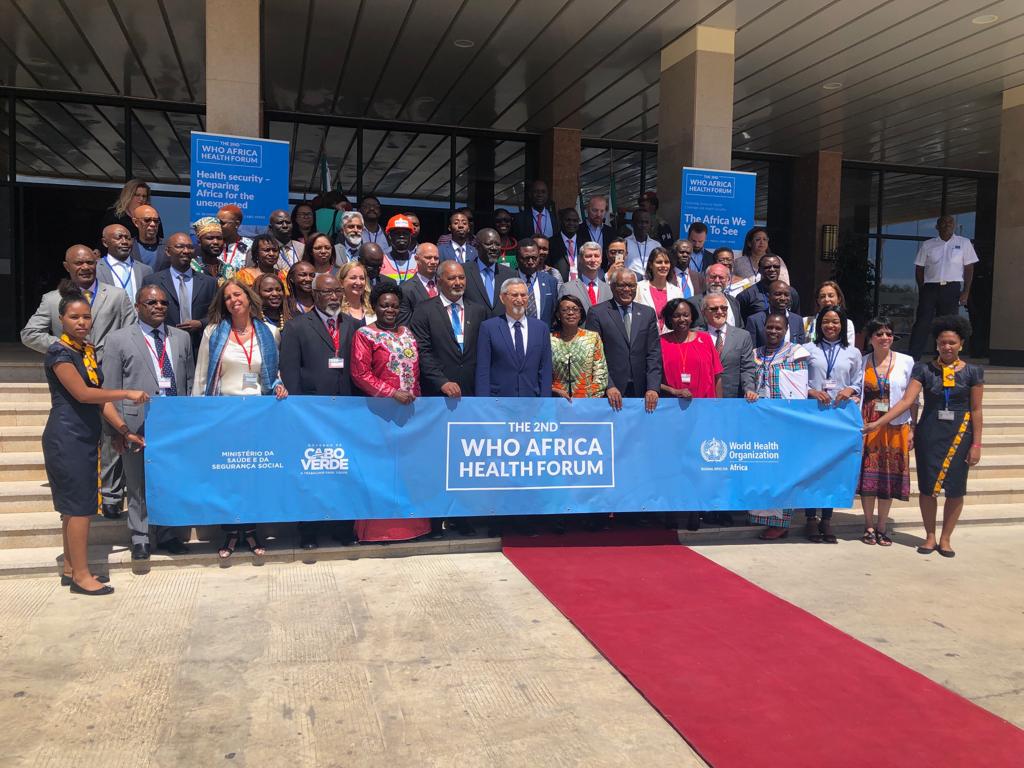
Dr. Kabamba Alexandre
My name is Dr. Kabamba Alexandre, commonly known as Alex.
I work for the Council for Scientific and Industrial Research (CSIR) in South Africa, Pretoria. My work at the CSIR involves developing novel diagnostic assays based on the microarray technology platform. The choice of this platform is because it enables us to perform multiple diagnostic tests simultaneously, saving time and money. The solution I took to the 2nd WHO Africa Health Forum in Cape Verde was on the multiplex point-of-care (POC) diagnostic test for detection of HIV and tuberculosis (TB). Why the multiplex POC diagnostic for HIV and TB is because HIV and TB coinfection is a major problem in many African countries including South Africa; also although there is a rapid test for HIV, but for TB there is none for use in screening programmes. Our solution is that of employing the microarray technology using a slide of 2.5 x 7.5 cm on which HIV and mycobacterium tuberculosis (M.tb) antigens are conjugated. Thus, if an infected individual blood is passed on this slide, HIV and M.tb antibodies will bind to their specific antigens. Next fluorescent secondary antibodies, specific to these HIV and M.tb antibodies, will be added to the slide. The fluorescence emitted by the secondary antibodies will then be detected with a portable battery powered fluorescence reader (or microscope) that we are also developing. A fluorescent emission at the spot corresponding to the HIV antigen will indicate HIV infection and fluorescence at spots corresponding to M.tb antigens will indicate the presence of active tuberculosis. With our technology a health care worker just has to take our microarray slide and portable fluorescence reader to communities living in remote areas and perform HIV and TB diagnosis there without requiring a laboratory. Our vision is not to stop here but to multiplex many other diagnostic assays such as HIV, TB, hepatitis B and C, herpes simplex virus 2 and so on. Because in theory on a microarray slide such as the one we are using about 3000 different antigens can be conjugated. Therefore, roughly you can perform 3000 different diagnostic tests on it simultaneously. This really has the potential to save our health practitioners a lot time especially when providing care to people living in remote areas. In addition, our technology will afford these communities an opportunity to be diagnosed quicker and given treatment sooner; ultimately saving everyone money.
My experience at the 2nd WHO Africa Health Forum was thoroughly positive; I met a lot African innovators like myself with the same goal i.e. bringing African solutions to health problems that affect African people. I commend the WHO Africa for coming up with this initiative. However, the major challenge with science in Africa is that of funding. In Africa, especially, innovative ideas are often not funded, not funded enough, or not funded soon enough. Given that things are moving so fast in science, what is likely to happen is that the same ideas or technologies will emerge somewhere else out of Africa and no longer be known as African innovations. Then these technologies will be brought back to Africa and sold much more expensive than it would have been if they were produced here. African innovators can always be encouraged to patent their work. However, patenting is not cheap and patenting in different countries is even more expensive.
My parting message is that there is no meaningful development of any society without innovation, and innovation comes with a financial cost. Africa cannot ask its children to innovate without being prepared to give them the necessary financial support.